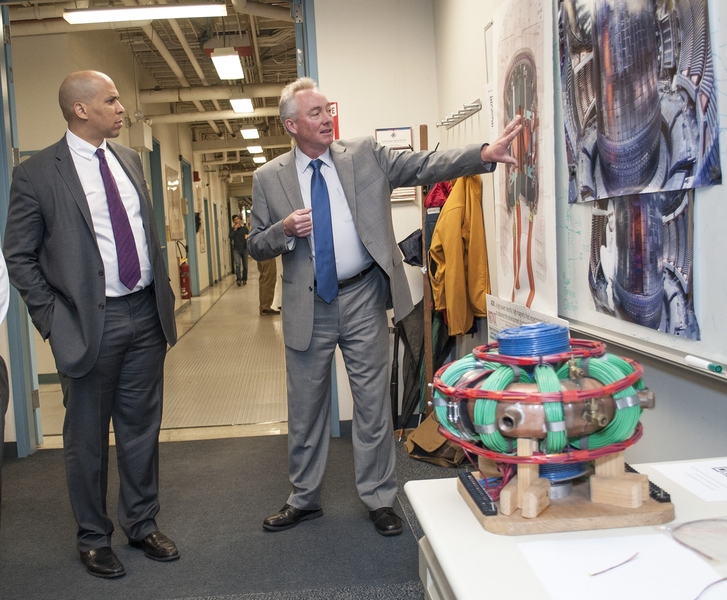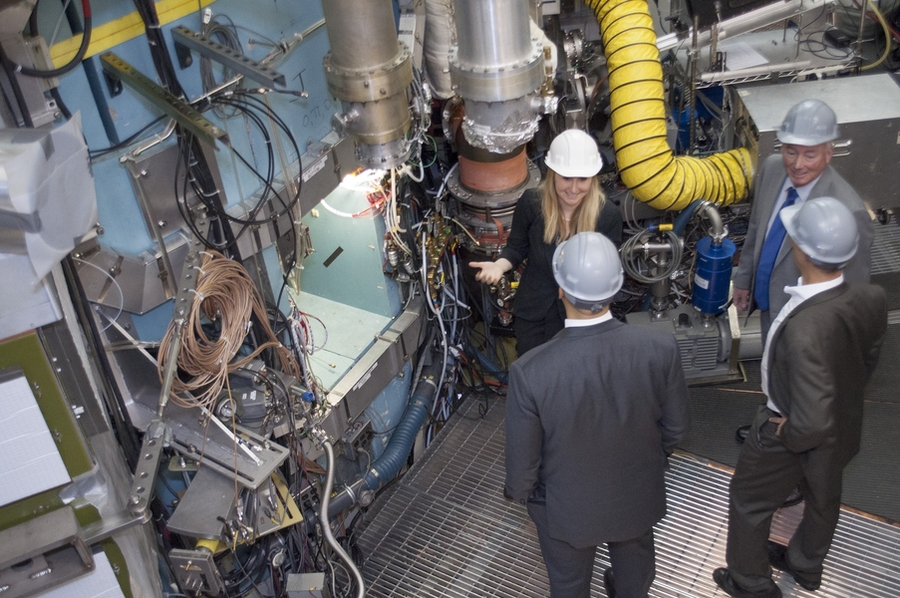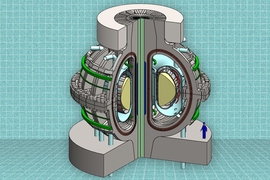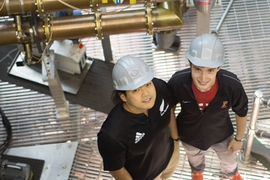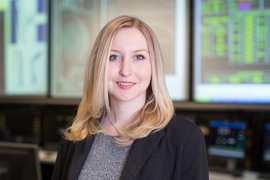U.S. Senator Cory Booker (D–N.J.) visited the MIT Plasma Science and Fusion Center (PSFC) on Oct. 16 to learn about the prospects for fusion energy and to tour MIT’s tokamak Alcator C-Mod fusion device. Also on the tour was the president of the Union of Concerned Scientists, Ken Kimmel.
Guided by PSFC Director Dennis Whyte, Deputy Director Martin Greenwald, and Reiner Beeuwkes '67, they heard about the center’s ideas for a compact fusion pilot plant, which would exploit an exciting new technology: thin superconducting tape made of rare-earth barium copper oxide (REBCO). This concept arose from a student design class and was recently published in Fusion Engineering and Design.
Observing that the superconducting tape is mostly steel, but with a thin copper coating, Whyte invited Booker and Kimmel to hold and test the tape’s strength, noting that the actual superconductor inside is 1/100th the thickness of the tape. Unlike previous superconductors, its properties do not degrade when the magnetic field becomes stronger, which allows a doubling or tripling of the available magnetic field. The new technology will also allow the fusion device to be modular, easily taken apart for repair and upgrades. He credited his students with helping to develop the design.
Whyte explained that this superconducting tape is not just a breakthrough for fusion, noting that MRI facilities may be built more efficiently; the ability to diagnose proteins will increase by a factor of 10; and cyclotrons for fine-targeted, proton radiation cancer treatment can be made more compact. It will have an impact on many areas of research.
Nuclear science and engineering Professor Anne White completed the tour, with a walk-through and explanation of the Alcator C-Mod facility.
